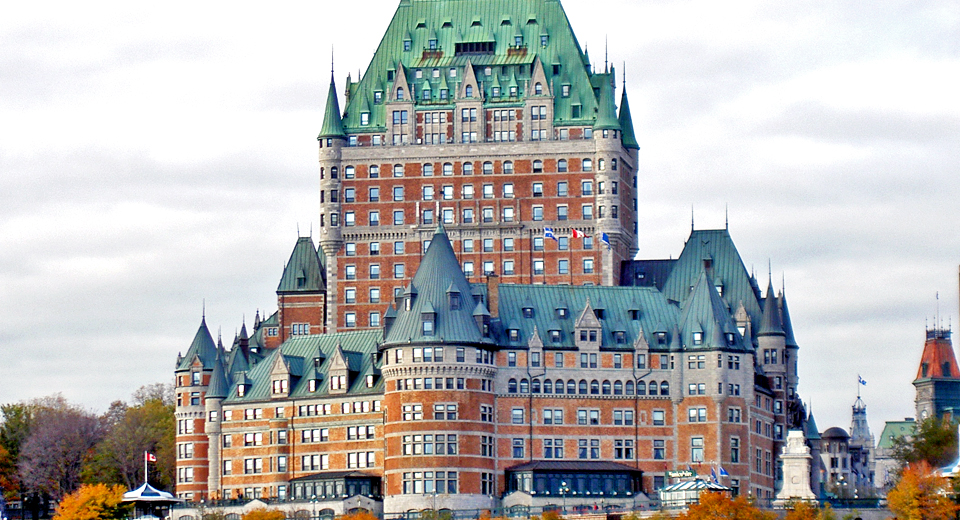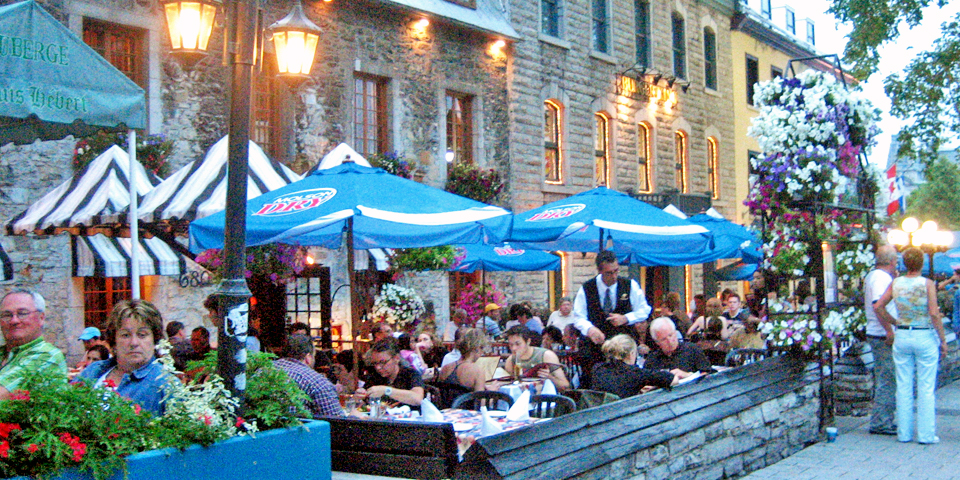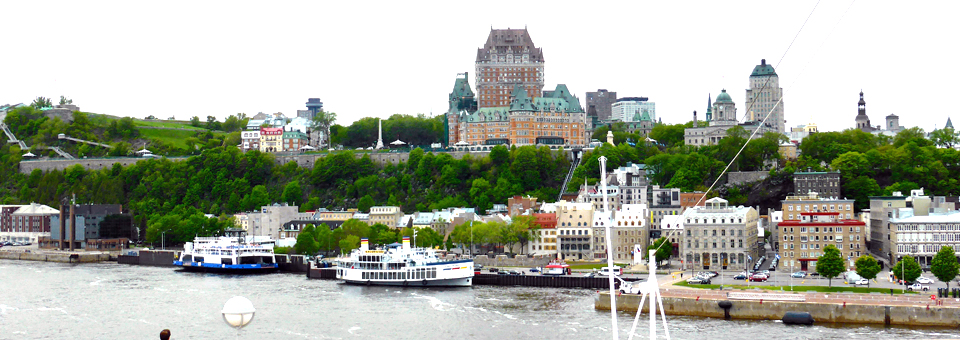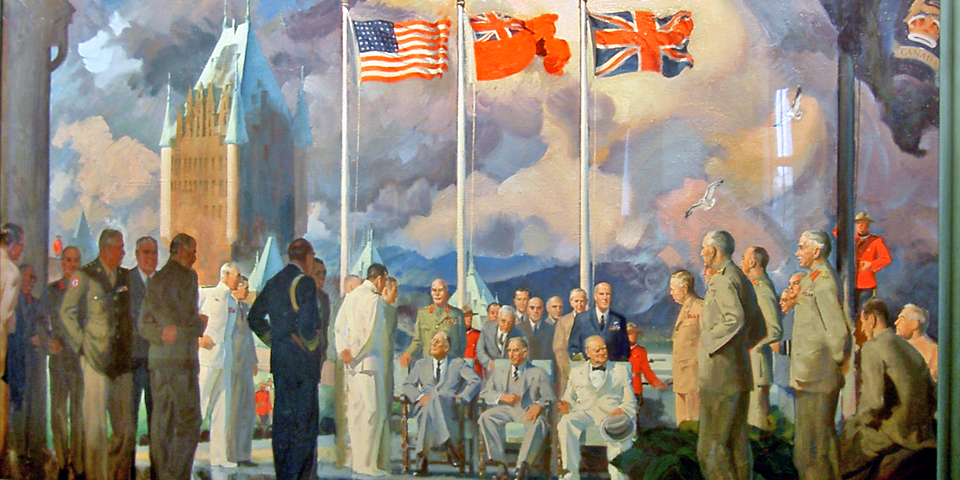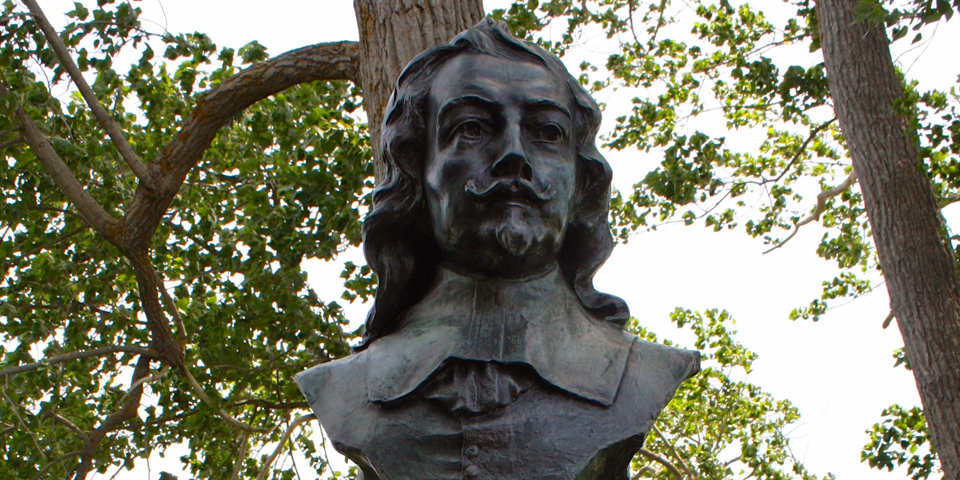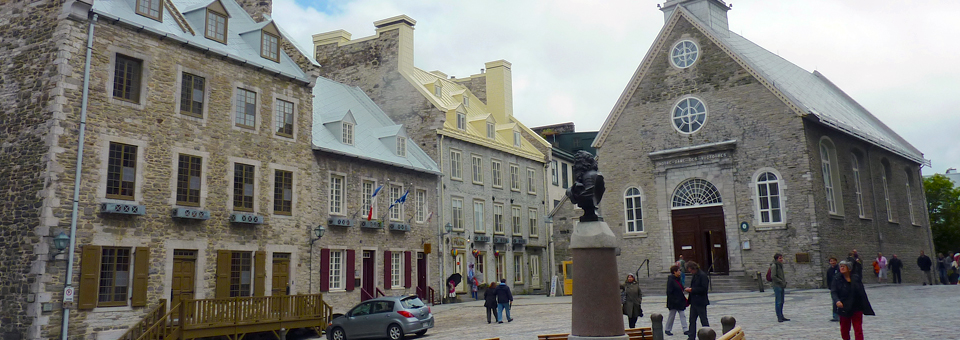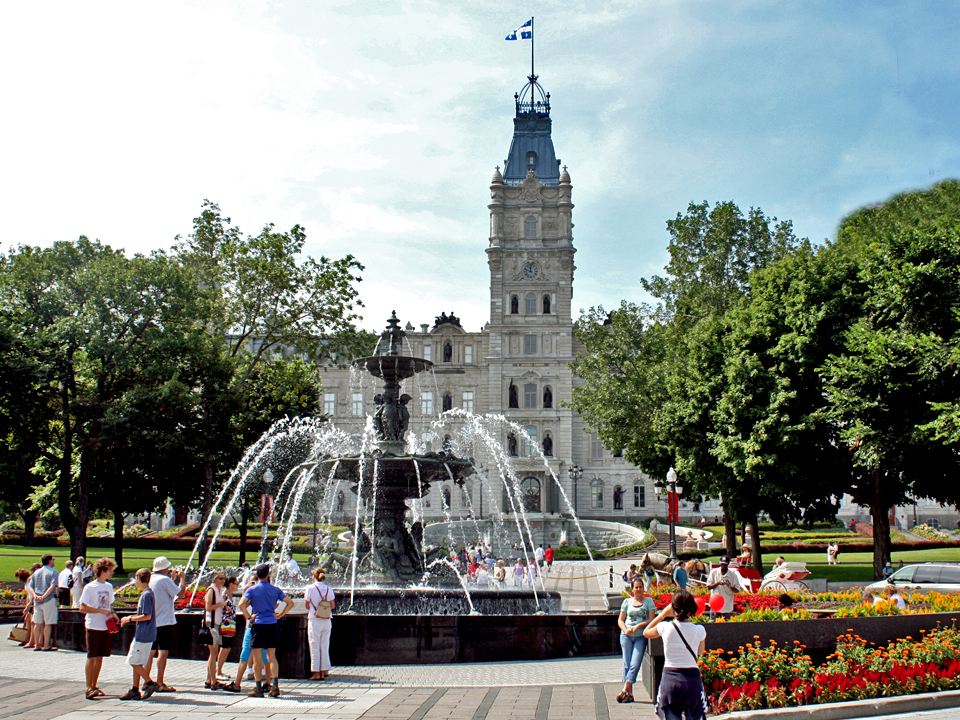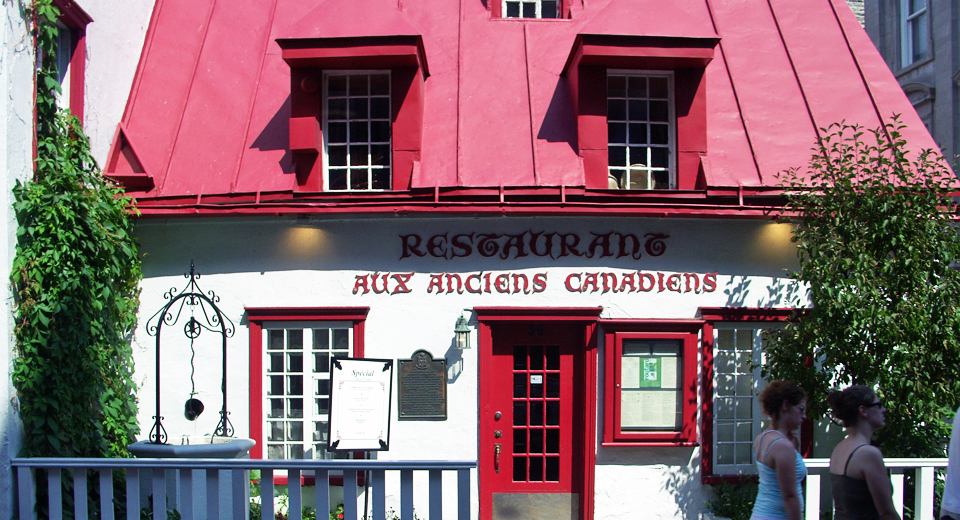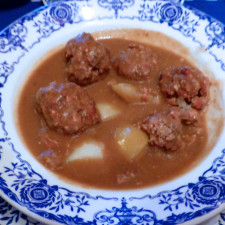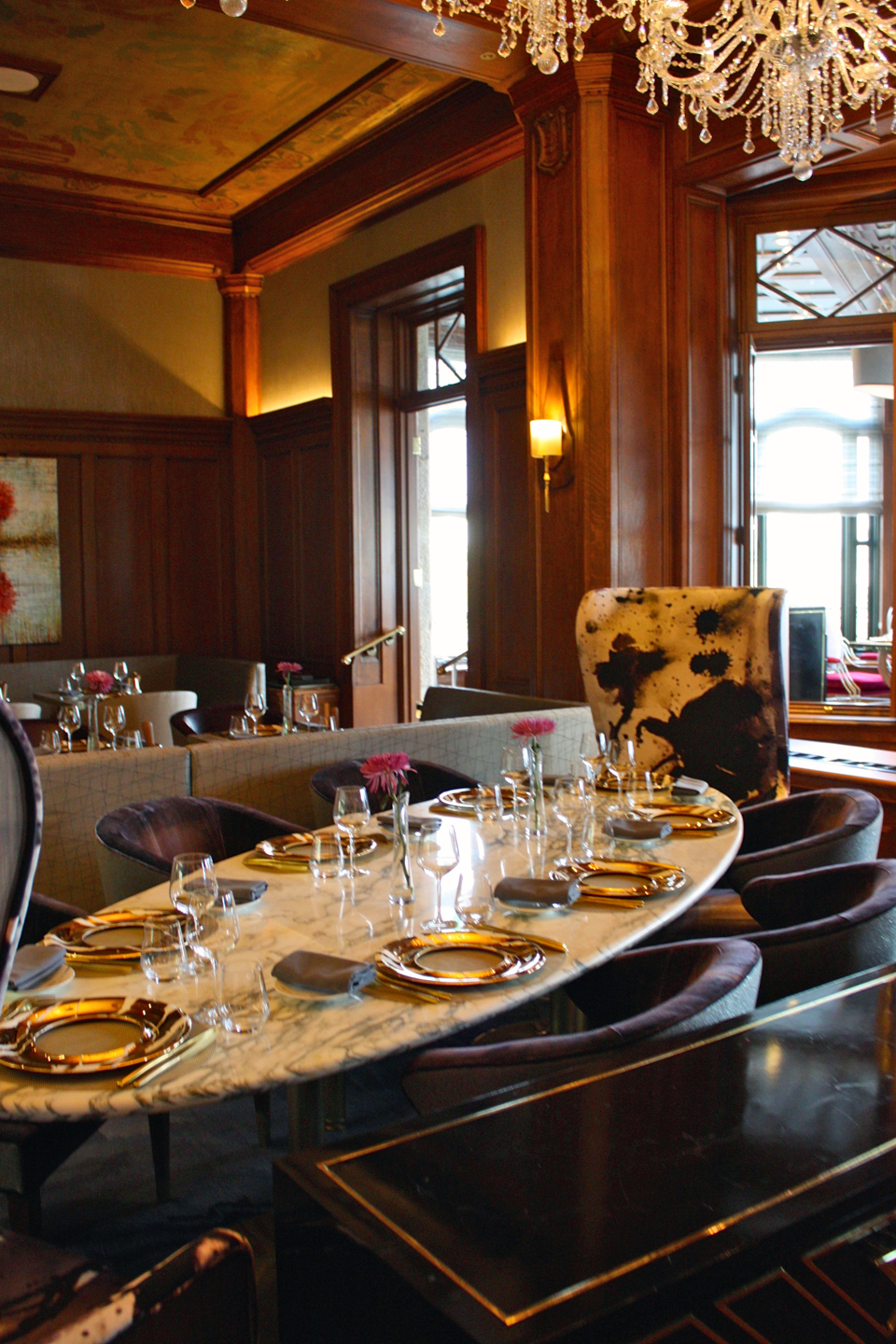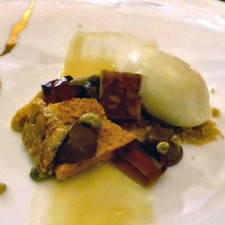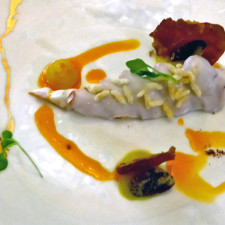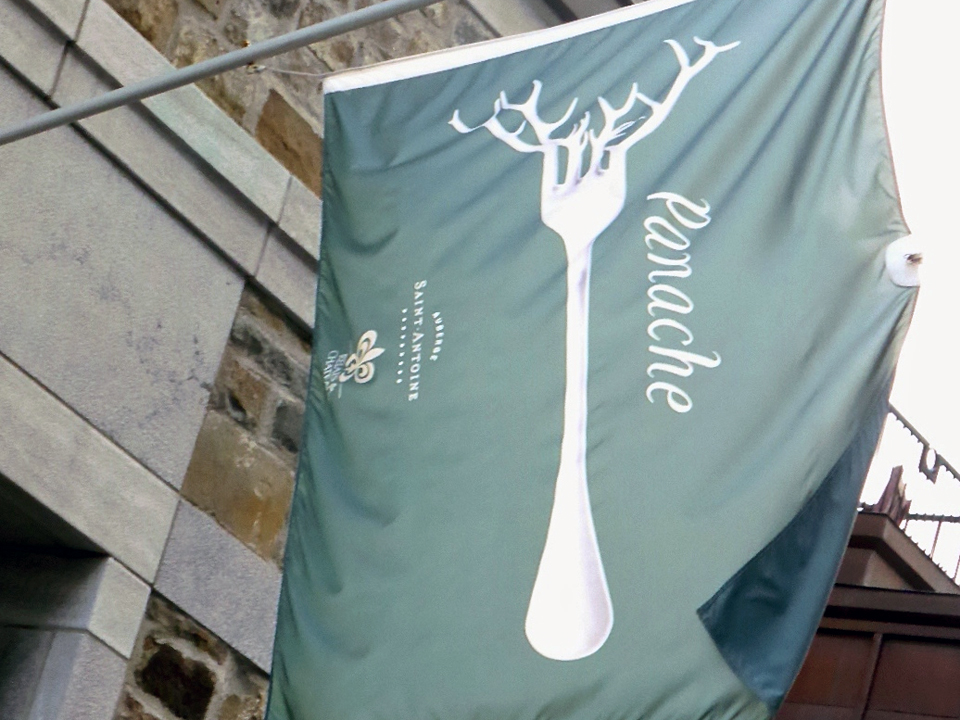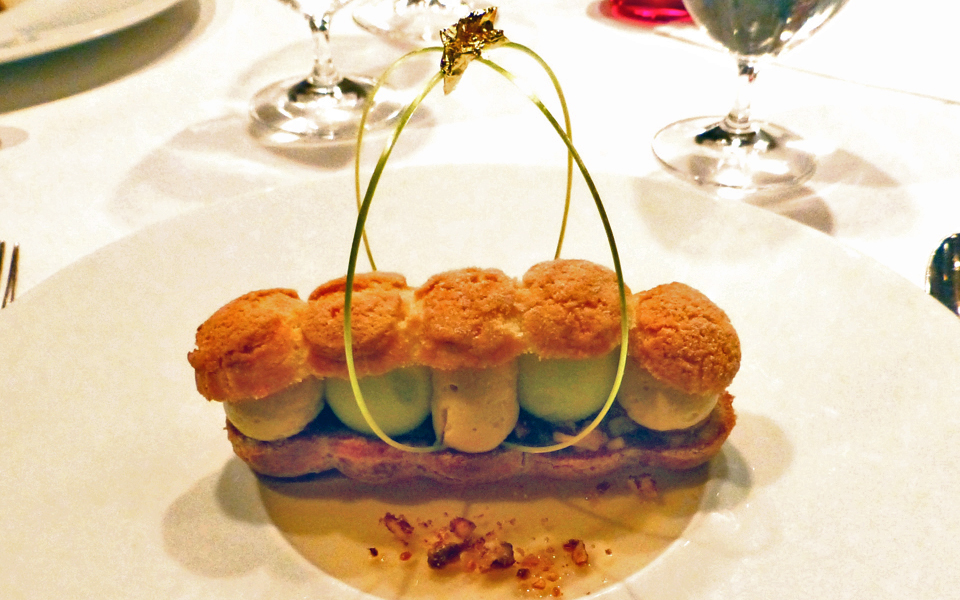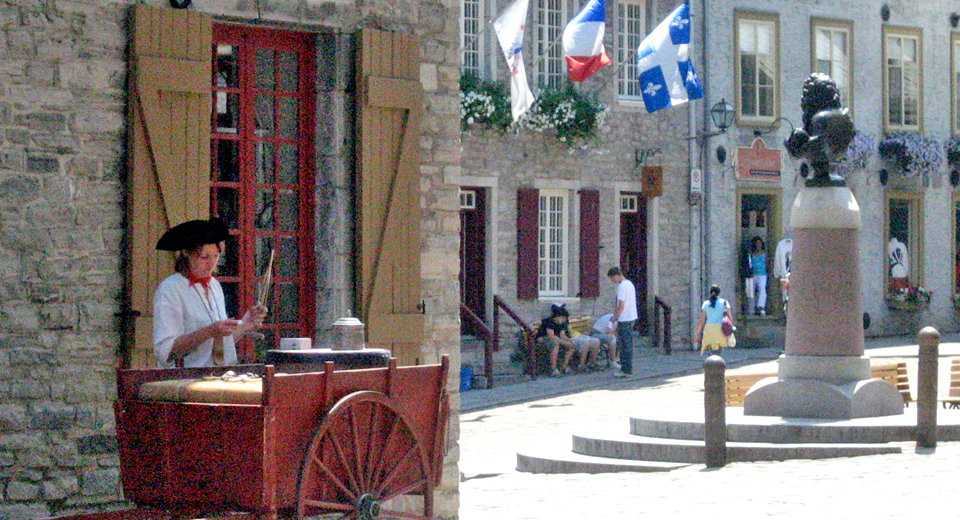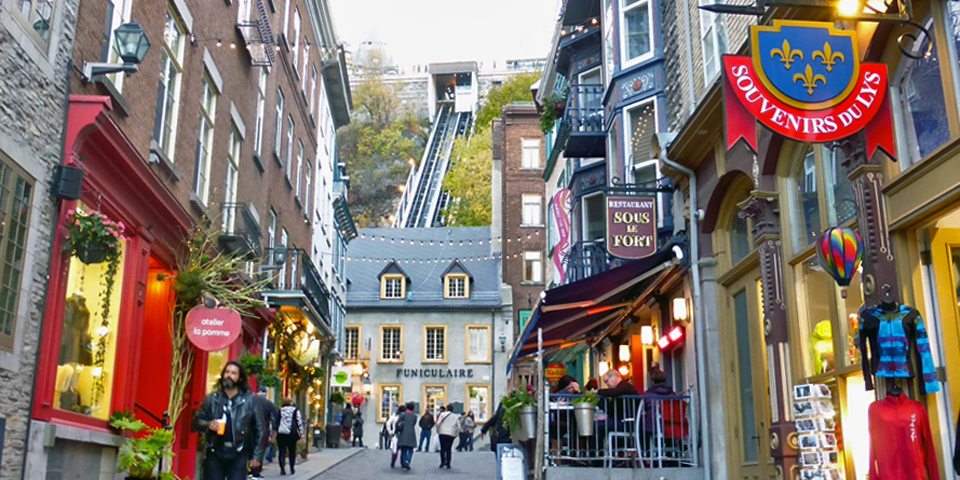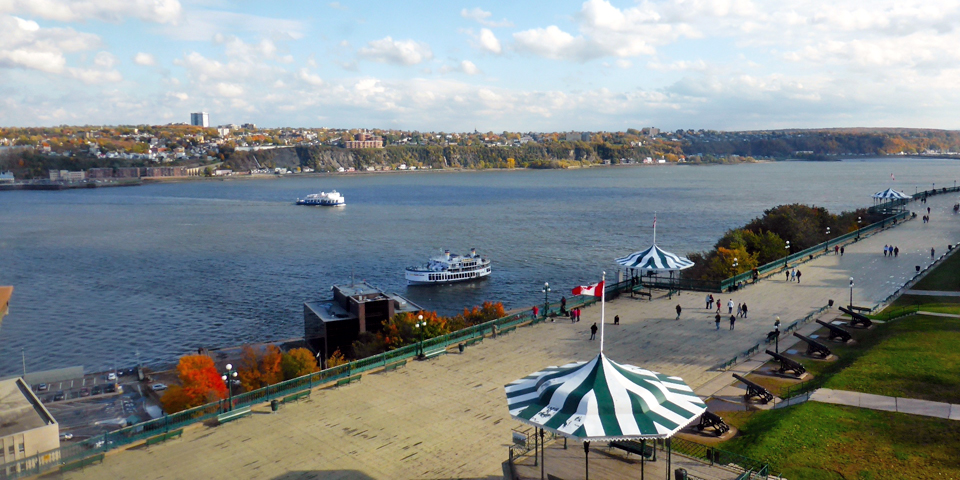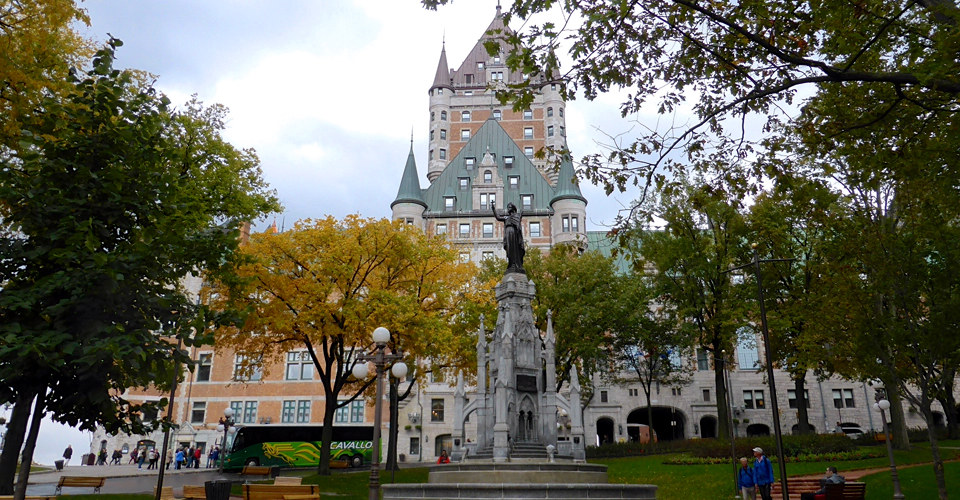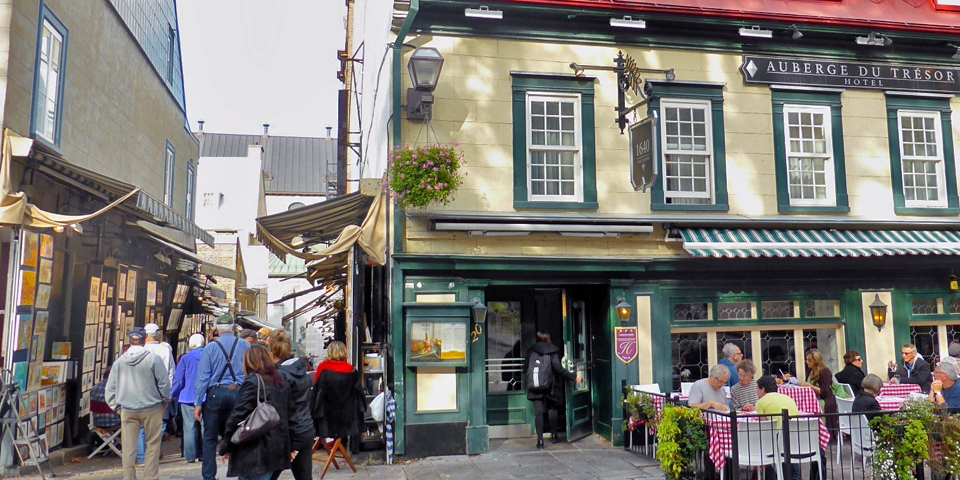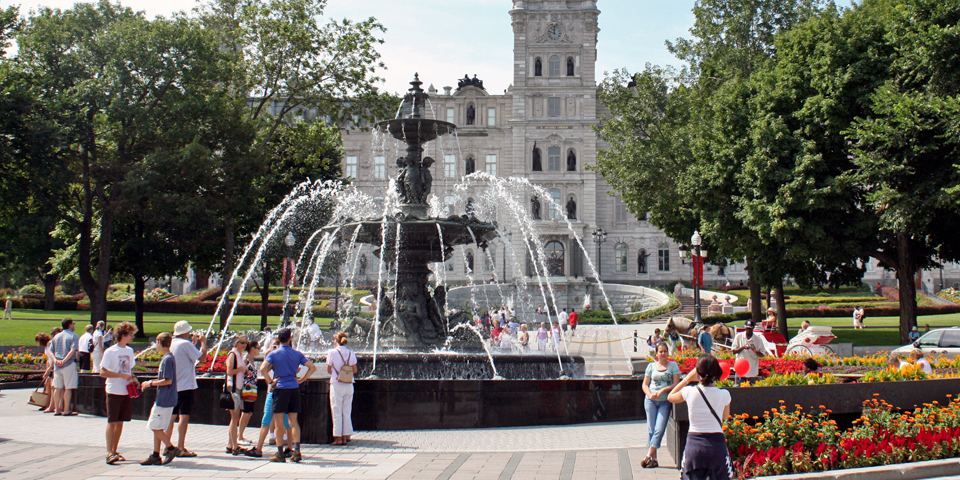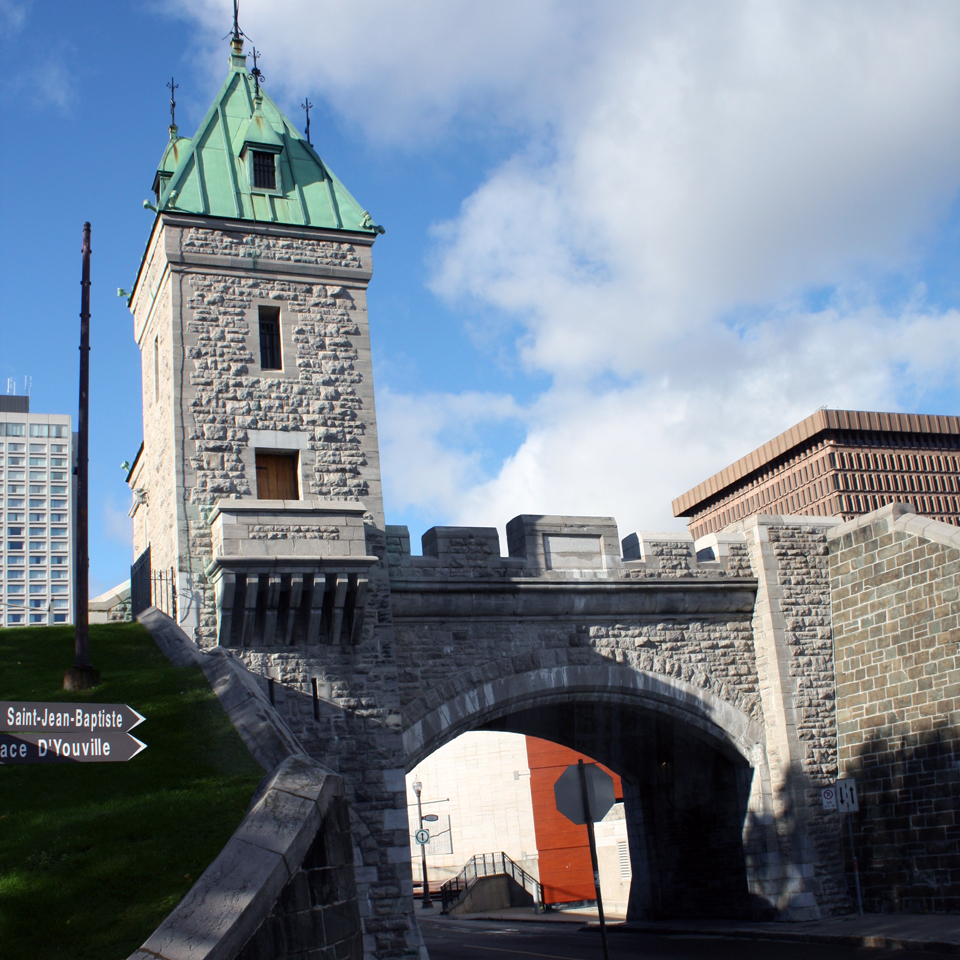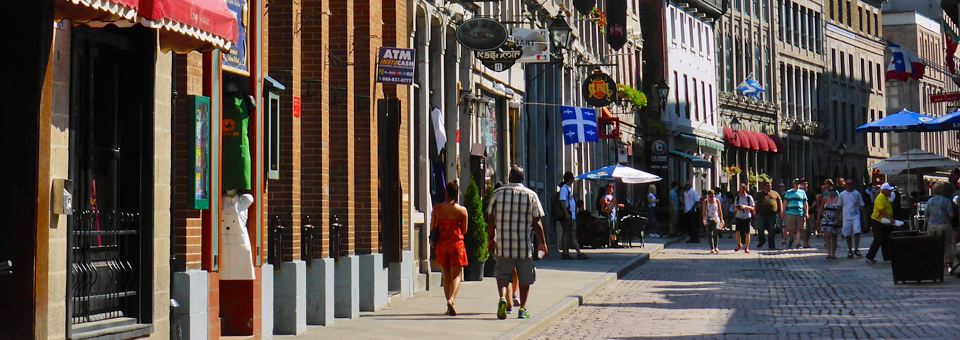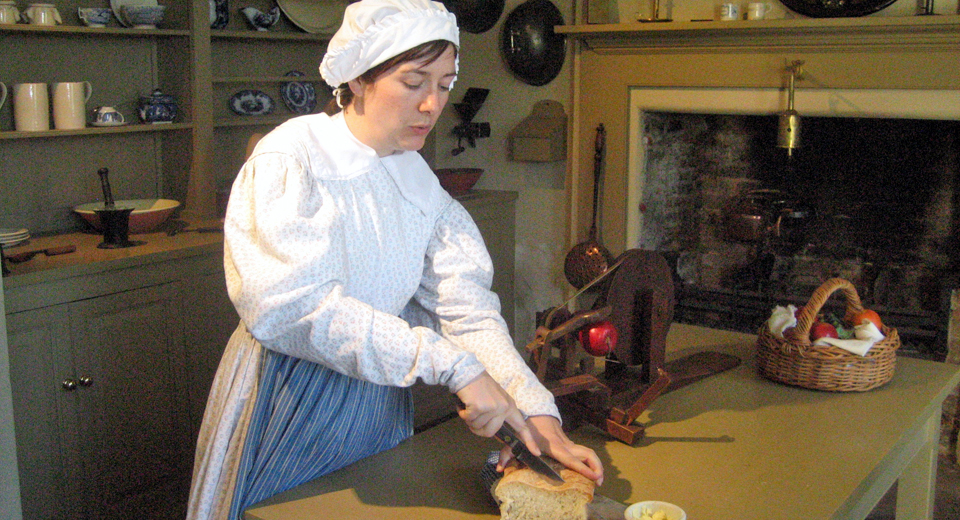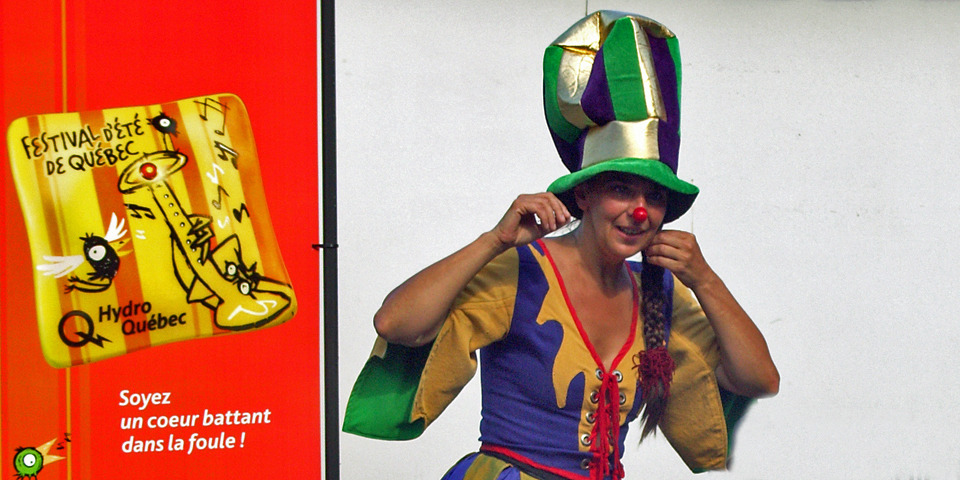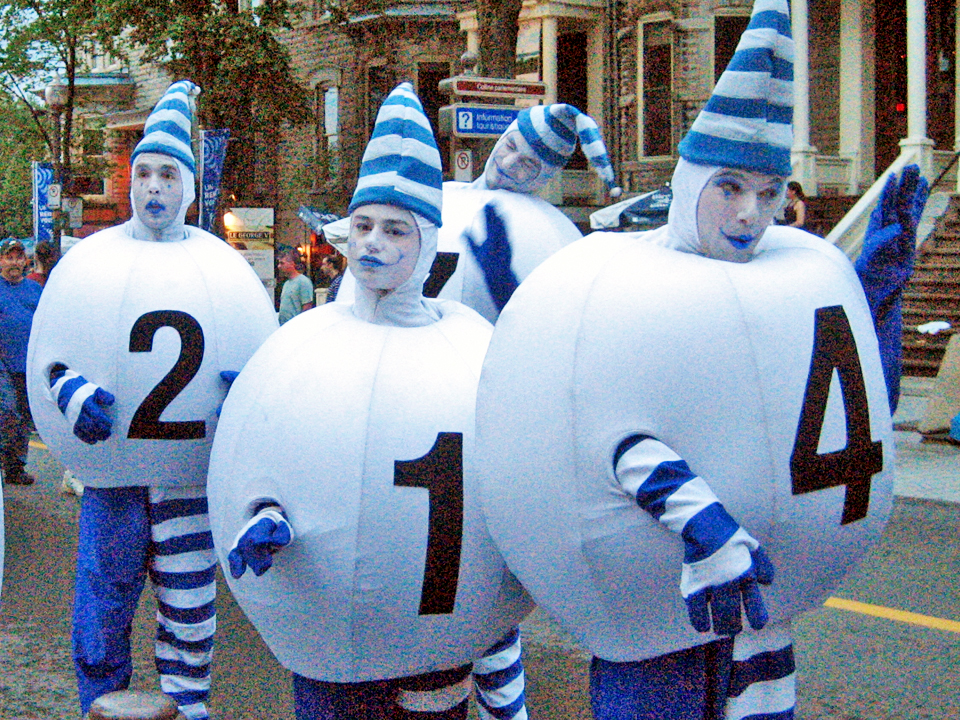Quebec City: French culture without the transatlantic flight
The flight from Boston was just an hour—and voila! We were sipping café au lait on Grand Allée, this continent’s Champs Elysées, in the capital of the province of Quebec, the cradle of French civilization in the Americas, swept up in the city’s romance and Old World charm. Less expensive than other major cities of the world, it’s a Continental-style experience without the time and expense of traveling overseas.
By car, it’s about two hours from the Maine border. There’s the allure of vacationing amidst another culture and language, the convenience of easy access, a warm and welcoming ambience, and English is spoken widely.
The turrets of the renowned Chateau Frontenac, the most photographed hotel in the world, loom high over the only preserved and maintained fortified city in North America. Visited by royalty and Presidents, it stands in a commanding position as the symbol of a city of extraordinary architectural beauty.
It was here that Roosevelt, Churchill, Eisenhower, and other Allied leaders met to plan World War II’s Normandy invasion.
Samuel de Champlain bust, Port Royal National Historic Site, Samuel de Champlain statue, Nova Scotia
The city of Quebec was founded in 1608 by Samuel de Champlain as a fur trade center and gateway to further explorations. The soaring cliffs overlooking the St. Lawrence provided a natural defense against invasion, and fortifications were built to secure the settlement.
Notre-Dame-des-Victoires Church, the oldest stone church in North America (1688), Place Royale, Quebec City
The Catholic Church sent missionaries to expand faith, and by the mid-18th century, Quebec was the capital of a territory that extended to Louisiana, encompassing 2/3 of North America, and making this empire the largest diocese in world.
Destiny changed in 1759 when the British prevailed, seizing Quebec in a surprise attack on the Plains of Abraham at a site now known as National Battlefields Park. The British in Quebec City built and reconstructed fortifications against American attacks and gained the support of the French by allowing them to retain their language, culture, laws, and religion. Together they defeated Richard Montgomery and Benedict Arnold in 1775. With the Constitution Act of 1867, the original provinces were united as one dominion named Canada.
Old Quebec
The winding cobblestone streets and carefully restored stone buildings take you back to a 17th century European city. Old Quebec has quaint squares, vibrant parks with flowers and gardens, cafes and bistros, antique shops, art galleries, and horse-drawn carriage rides.
Little wonder distinctively French Quebec City was declared a World Heritage Treasure by UNESCO.
Tourny Fountain was built with the $4 million gift from the owners of the Simons Department Store to the city for its 400th anniversary.
Today’s Quebec City has an elegant Town Hall resembling Paris’ Louvre and a grand hotel inspired by the chateaux of France’s Loire Valley.
Though steeped in history, it sizzles with the activities of today. Quebec City has the largest concentration of fine dining establishments in the world, and more than 100 restaurants in the tourist district alone.
Choices range from traditional Quebecois “comfort food” like tourtière, a French meat pie, and sugar pie to the most sophisticated 5-star cuisine. Restaurants in the historic district post menus out front in French and English. Table d’Hôte specials are fixed priced full-course meals and are generally outstanding values.
The historic area is best explored on foot, and a good place to begin is where it all began—on Place Royale—in 1608.
Our Lady of Victory Church, built on the foundation of Champlain’s trading post, dominates the square.
From there, the energetic can climb the sixty-one steps linking Upper and Lower Town or follow meandering paths to the top.
The rest take the funicular accessed through Boutique Louis Jolliet to Dufferin Terrace and the Chateau Frontenac.
In and around the Old Town, there are several highlights that shouldn’t be missed:
Dufferin Terrace— Named for the Governor General who campaigned to preserve the walls and rebuild the gates, it is connected by a boardwalk known as Promenade des Gouveneurs to the Plains of Abraham Battlefield National Park, the recreational area that is also the site of special events. The views of the St. Lawrence and Lower Town are breathtaking.
The Chateau Frontenac— Built in 1893 in medieval French style, with turrets and green copper roofs, this symbol of the city exemplifies 19th century Canadian Railway architecture.
The Citadel— Begun by the French and completed by the British, this star-shaped fortress is often called the “Gibraltar of the Americas” for its striking location atop Cap Diamont promontory. The largest military fortification in North America garrisoned by regular troops, the Royal 22nd Regiment, it draws crowds to the changing of the guard at 10 am during the summer season.
Artists’ Alley—This taste of Montmartre on Rue de Trésor, one of narrowest streets in world, is a great place to find that perfect treasure. It teems with paintings and prints, many inspired by picturesque streets of the city.
Parliament Building— Headquarters since 1886 of the National Assembly of Quebec, this is a rare example in North America of French Second Empire style. The façade features important events and people in Quebec’s history. Free guided tours are available and there’s a restaurant open to the public for lunch.
Quartier Petit-Champlain— North America’s oldest shopping/commercial street has been meticulously restored, and features artisans’ shops, Amerindian crafts made by Canada’s First Nations (indigenous population), designer fashions, and street performances. Catch the handicapped-accessible funicular here to Upper Town.
Fortifications Promenade— Walk along the ramparts and interpretive panels on a Fortifications Tour offered by Parks Canada and discover the evolution of this defense system. Enjoy a spectacular view of unique 400 year old architecture and the St. Lawrence River.
MV Louis
–Cruise the St. Lawrence past the Île d’Orléans and Montmorency Falls—100 feet higher than Niagara Falls. Learn about “La Nouvelle France” and Quebec’s landmarks. It’s a great way to experience the tapestry of color in autumn and one of the best views of the city.
Grande-Allée— Stroll past elegant stone homes of the British regime along this elm-lined boulevard—now a hub of activity with pubs, bistros, and nightclubs. Dance the night away at Chez Maurice, the trendy place to see and be seen. Shop or dine with locals at the boutiques, boulangeries (bakeries), restaurants and épiceries (grocery shops) on side streets like Rue Cartier in the chic Montcalm district.
Rue Saint Paul— Near the maritime history of the Old Port, and lined with cafes and art galleries, this is the place to shop for antiques.
Among the best
National Museum of Fine Arts in National Battlefields Park, in three buildings, one a former prison with garden views, features Quebec artists. Until September 10, there is a special exhibit of Clarence Gagnon’s work.
Museum of Civilization, a popular participatory museum, contains permanent and temporary exhibits of historical and contemporary culture.
Artillery Park National Historic Site, established by the French to protect the area, used by the British to garrison troops, and site of a Canadian cartridge factory, brings 250 years of French, British, and Canadian history to life.
Museum of French America highlights the history of the seminary and establishment of French culture in New World and exhibits art, scientific and religious artifacts collected by the seminary priests.
Hôtel Dieu Augustines Museum is on the site of North America’s first hospital, founded by three nuns of the Order of les Augustines Hospitalieres. The museum’s collection includes furniture, silver, art and unusual early medical tools.
Festivals
Quebec City offers special celebrations throughout the year. Among the best are:
For the eleven days of the Summer Festival in mid-July, the streets come alive as a giant stage with local and international artists, big names and newcomers, and free street performances. A button known as an effigy provides admission to the rest. The first weekend in August the Festival of New France celebrates the arrival of the first European settlers in North America. It’s an opportunity to don a costume and step back in time. The summertime Loto-Quebec Fireworks Competition, set to music amidst the natural beauty of Montmorency Falls Park is a dazzling international competition. February’s world-class century-old Winter Carnival is centered on a giant ice castle in Place Jacques Cartier. It features an international ice sculpture competition, night parades, a canoe race over the frozen floes of the St. Lawrence, a snowbath, toboggan runs along the promenade, horse-drawn sleigh rides, dogsled rides, skating, and a sashed snowman mascot.
Quebec City is one of safest regions in North America, rich in history and culture, a fine dining capital, impeccably maintained, with something for all budgets and tastes. Who could ask for anything more?

